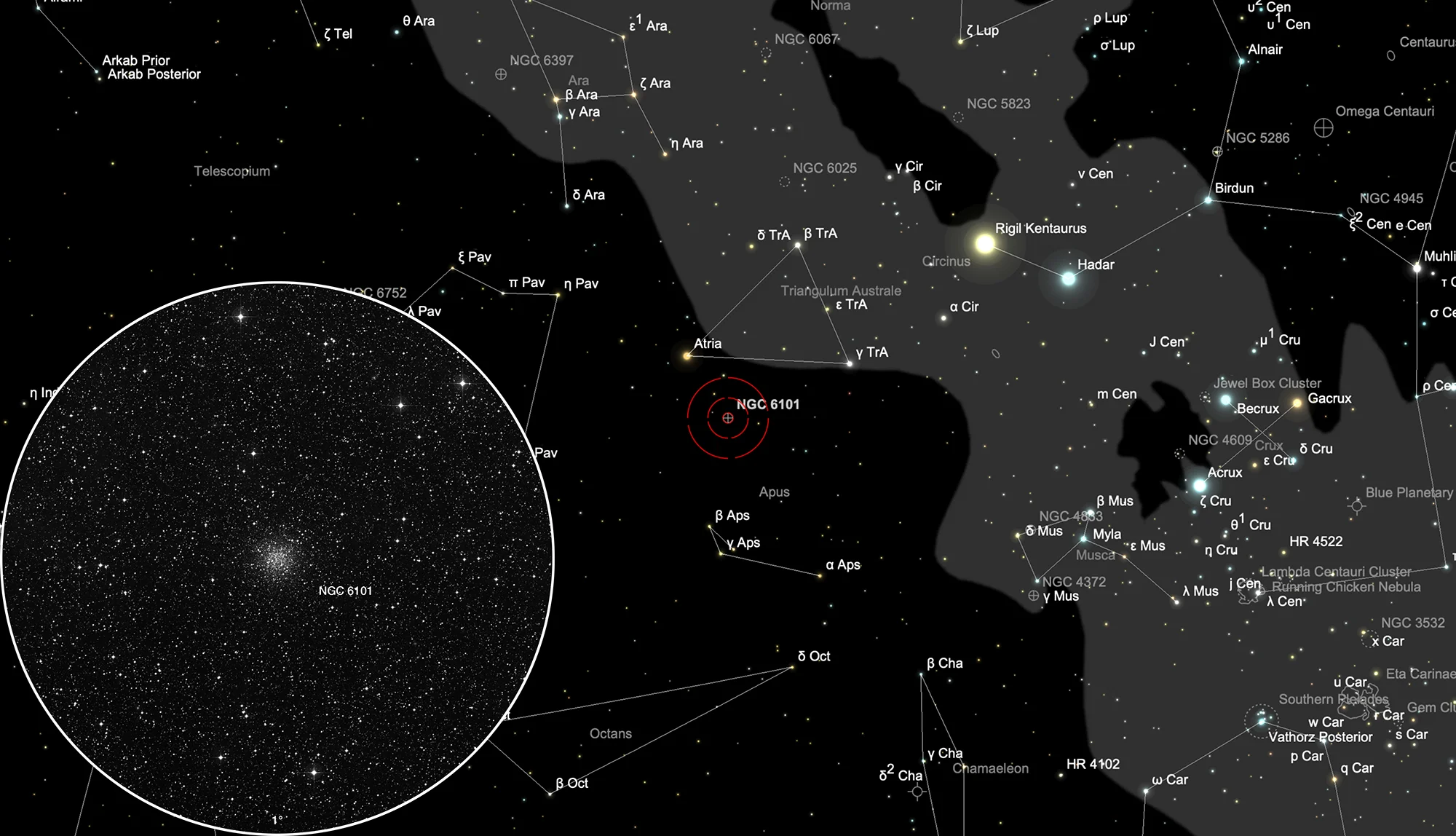Globular Cluster NGC 6101

History
This globular cluster was discovered on 1 June 1826 by Scottish astronomer James Dunlop with his 9-inch f/12 speculum reflector at his home in Parramatta (NSW) in Australia. He listed it as Δ 68 and observed it three times. His summary description was: «A pretty large rather faint round nebula, about 3.5' or 4' diameter, a little brighter in the middle. There is a very small nebula on the N.p. side joining the margin of the large nebula.» [50]
John Herschel listed the cluster as h 3623 and observed it three times using his 18.3-inch telescope at Feldhausen observatory in South Africa. On 18 June 1835 (sweep 598) he wrote: «Globular cluster, large, faint, round, very gradually a little brighter in the middle, all resolved into stars 15..18th mag, 4' diameter, with stragglers. A delicate and beautiful object.» A week later (sweep 605) he observed it again and noted: «Globular cluster, pretty bright, large, irregularly round, gradually brighter in the middle, resolved into stars 13..16th mag; pretty compressed, diam 5' or 6' by estimation, approx. 50 seconds in RA. A fine object.» [11]
Physical Properties
| Designation | NGC 6101 |
| Type | GCL (X) |
| Right Ascension (J2000.0) | 16h 25m 48.6s |
| Declination (J2000.0) | -72° 12' 04" |
| Diameter | 5 arcmin |
| Visual magnitude | 9.2 mag |
| Metric Distance | 15.400 kpc |
| Dreyer Description | globular, pF, L, iR, vgbM, rr, st 14 |
| Identification, Remarks | h 3623; GC 4175; GCL 40; ESO 69-SC4 |
Finder Chart
The globular cluster NGC 6101 can be found in the constellation Apus. Unfortunately it is not visible from Europe. On 30 May it in opposition with the Sun and is therefore highest in the sky at local midnight.
